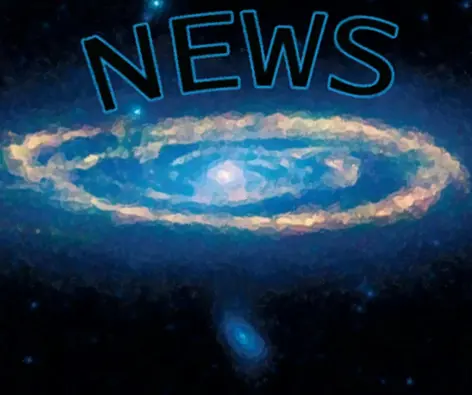Unveiling the Mystery of the Question Mark-shaped Cosmic Body
2 min read
Andromeda News
In the vast cosmic canvas of the Milky Way galaxy, a celestial enigma has unfolded within the Vela constellation. A question mark-shaped cosmic body, situated approximately 1,470 light years away from Earth, has unexpectedly made its presence known through images captured by the Webb Space Telescope. As astronomers delve into the intricacies of this cosmic curiosity, they are faced with a myriad of challenges that have left the scientific community in awe.
The Webb Space Telescope, a technological marvel designed to explore the mysteries of the universe, has brought us countless breathtaking images of distant galaxies, nebulae, and other celestial wonders. However, in a twist of cosmic irony, it was not one of these distant objects that recently stole the spotlight. Instead, a cosmic intruder, with its distinctive question mark shape, inadvertently photobombed images taken by this powerful telescope.
The question mark-shaped cosmic body’s location in the Vela constellation, a region rich in celestial treasures, has only deepened the intrigue. Astronomers estimate its distance from Earth at around 1,470 light years, placing it within our cosmic neighborhood. However, the story takes an even more astonishing turn with the revelation from Christopher Britt of the Space Telescope Science Institute, who suggests that this cosmic anomaly might actually be billions of light years away, challenging our understanding of cosmic distances.
One of the most compelling theories proposed by experts, including Christopher Britt, is that the question mark-shaped cosmic body might be the result of a merger between two galaxies. Galactic mergers are cosmic events of epic proportions, where two galaxies collide and eventually combine to form a new entity. If this hypothesis holds true, it could provide invaluable insights into the mechanisms that shape our universe.
To put this discovery into perspective, Christopher Britt compared the enigmatic cosmic body’s potential location to the Herbig-Haro 46/47 region, a well-studied area in the cosmos. This reference underscores the tremendous scale of the universe, highlighting how even objects in our cosmic backyard can challenge our understanding of cosmic distances when viewed through the lens of the cosmos.
The presence of the question mark-shaped cosmic body has thrown numerous challenges at cosmologists and astronomers. These include identifying the nature and origin of this celestial phenomenon, understanding the processes that led to its unique shape, and unraveling its potential cosmic significance.
As astronomers continue their quest to unlock the secrets of the universe, the question mark-shaped cosmic body stands as a testament to the vastness and complexity of the cosmos. This chance discovery, while initially a photobomber in the Webb Space Telescope’s images, has ignited scientific curiosity and fueled our collective wonder about the mysteries that lie beyond our terrestrial home.
In the coming years, as research and technology advance, we may come closer to deciphering the true nature of this cosmic enigma. It serves as a reminder that in the vast expanse of space, there are always more questions than answers, and our understanding of the universe is an ongoing journey of exploration and discovery.


